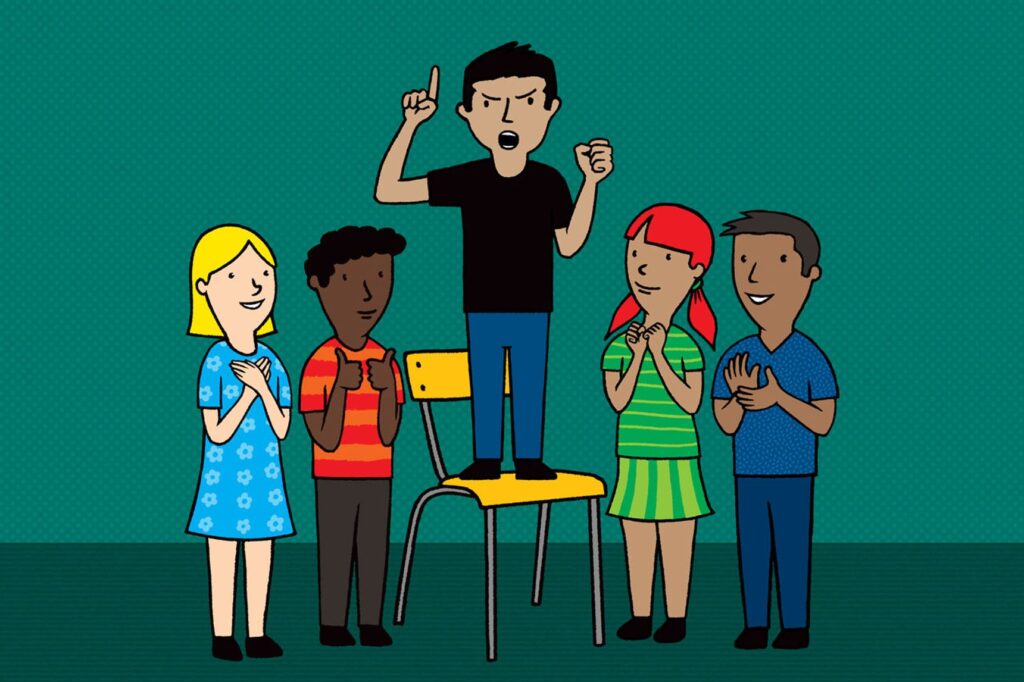How Children Use Conflict to Win Popularity
By Susan Pinker
www.wsj.com/articles/how-children-use-conflict-to-win-popularity-11651774475
If you’ve ever watched someone start an argument just to win it, then you’ve witnessed a maneuver the person has likely been honing since third grade. Stirring up conflict is how some young children manage to achieve top-dog status, according to a study recently published in the journal Personality and Individual Differences.
The idea that aggression can stoke a certain popularity isn’t new, says Brett Laursen, the lead author and a psychology professor at Florida Atlantic University. But the study showed a pattern among schoolchildren that stemmed from aggressors creating repeated conflicts; classmates would often submit rather than engage.
When researchers use the term “popularity” to describe the type of status involved, it’s not the usual connotation. “We don’t mean that other kids really like these kids,” said Dr. Laursen. “It’s more a sign of dominance. Popular kids set standards and control resources, like who sits next to you at lunch, or who gets invited to your birthday party, or who pays attention to you.”
Aggression doesn’t necessarily mean using physical force, he said. “Always hitting other kids can backfire. It’s much safer to use conflict—without hitting—to get others to back down…You just need disagreements where people demonstrate their fealty to you, because they’re afraid of what might happen.” Yet being aggressive in order to climb the social ladder doesn’t work for everyone, he added. “That’s the head scratcher.”
To explore the issue, Dr. Laursen, working with doctoral candidates Michael Yoho and Sharon Faur, asked 356 elementary-school students—all third-, fourth- and fifth-graders—to fill out detailed questionnaires near the beginning of their fall semester. The kids were queried about their opinions and beliefs, and about how many disagreements they’d had the day before and with whom. They were asked to nominate classmates who “talk bad about others behind their backs,” who “get into trouble at school, or who “hit, push or shove others.” There were also questions about who the students would choose to spend time with or avoid. Thus, the researchers got an overview of the social dynamics of each class near the beginning of the year. At the end of the semester, the researchers asked the same students to complete the questionnaires again.
The results showed that children who maintained a frequent pattern of aggression had raised their status at the end of the term, while those who didn’t continue their confrontational behavior failed to get the popularity boost. In short, a small number of students in each grade kept initiating disagreement, presumably with the intention to command respect. Dr. Laursen added, “Most of these disagreements were not big arguments, but rather displays of dominance, say, overruling someone’s suggestion, just to let others know who’s the boss.”
What sets these students apart is their tendency to “think strategically about manipulating others,” suggested Dr. Laursen, adding that it’s likely a lasting trait. “For people who care about their status, a disagreement is never just a disagreement. Whether you’re 15 or 50, everything is an exercise in maintaining and improving popularity.”
Other research has shown that such belligerent behavior, rather than being penalized, is rewarded even more at older ages. That may paint a bleak picture of our social world, but at least it describes only a small cohort of people. As Dr. Laursen points out, society tends to rely on pecking orders of one kind or another. Perhaps some of these younger toughs will yet have time to find less combative ways to rise in status. We can only hope.


